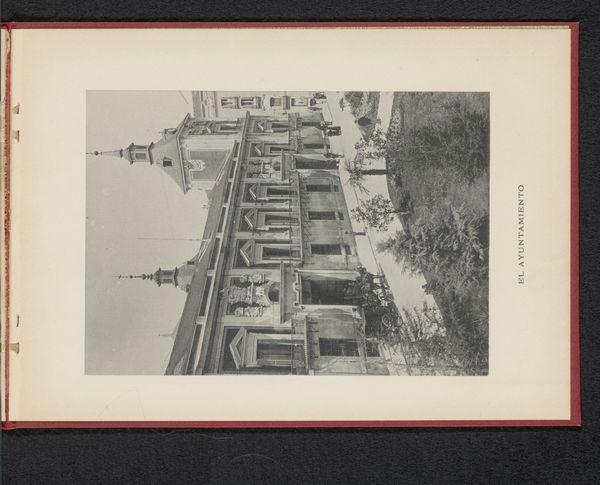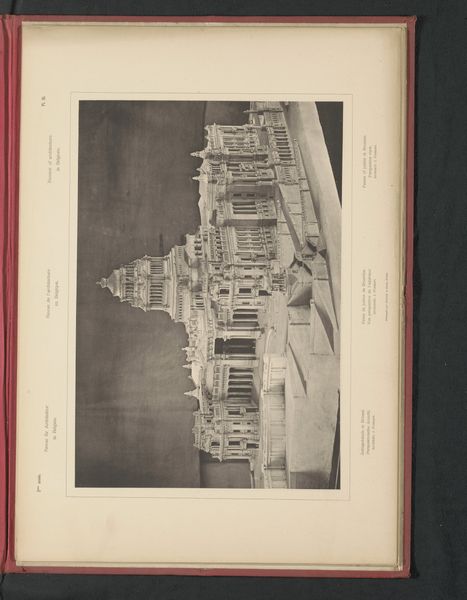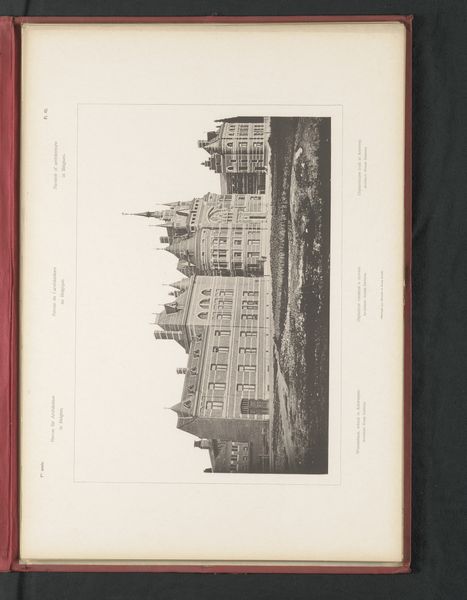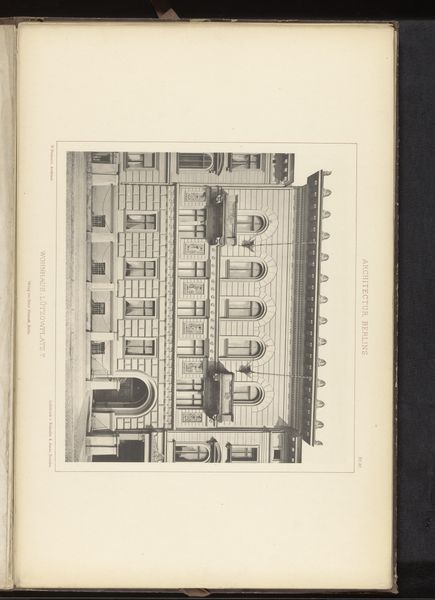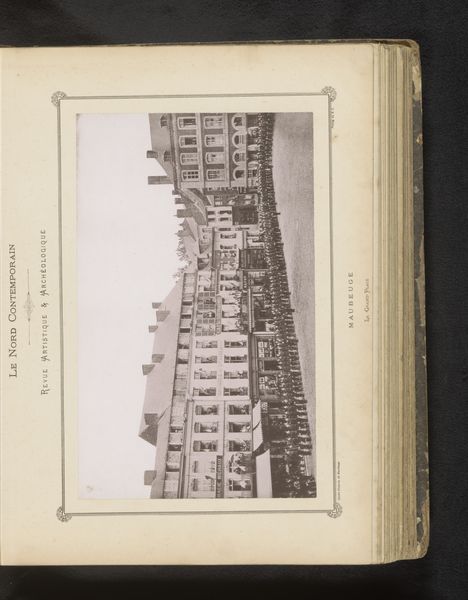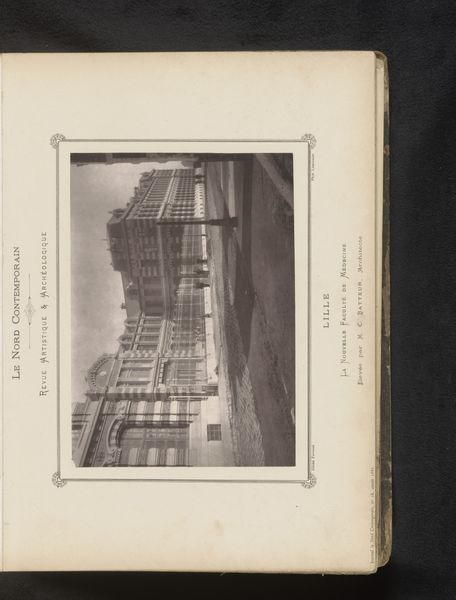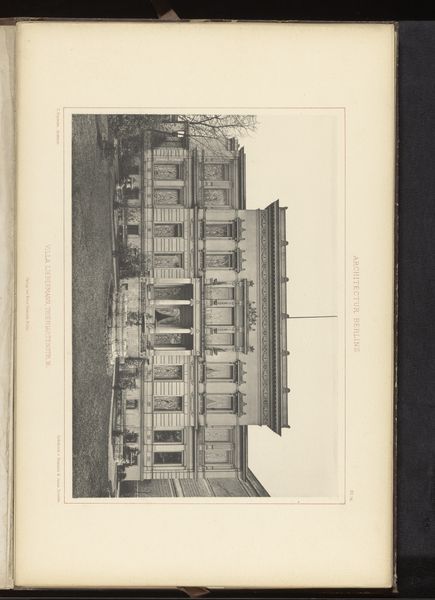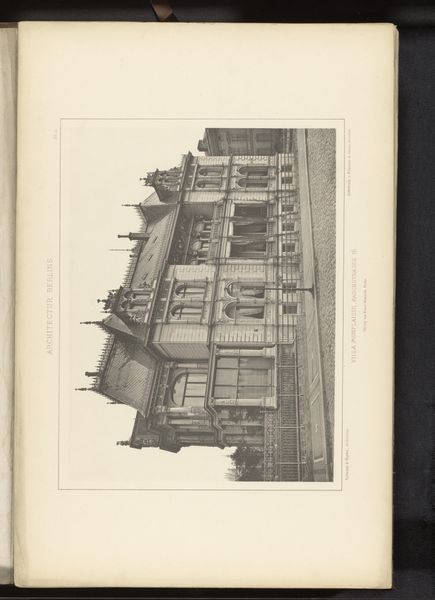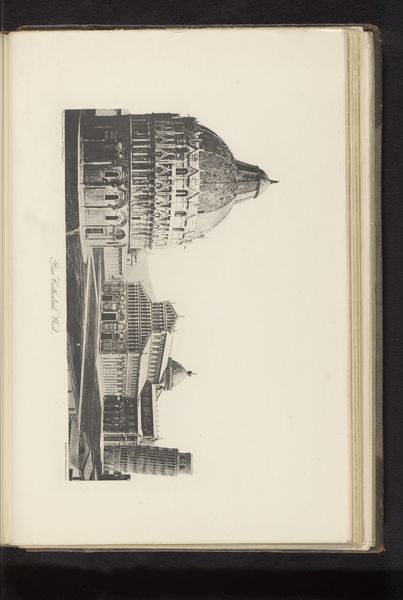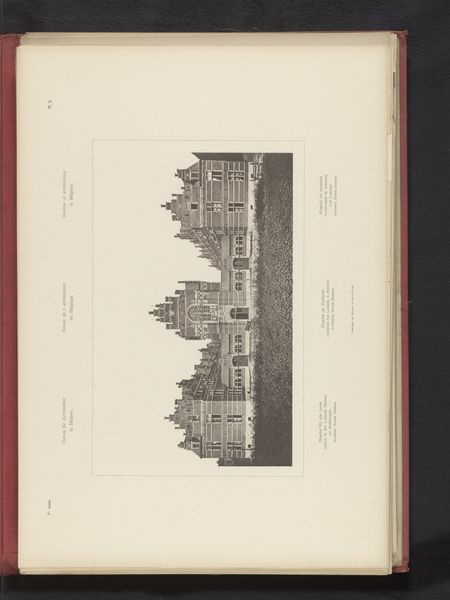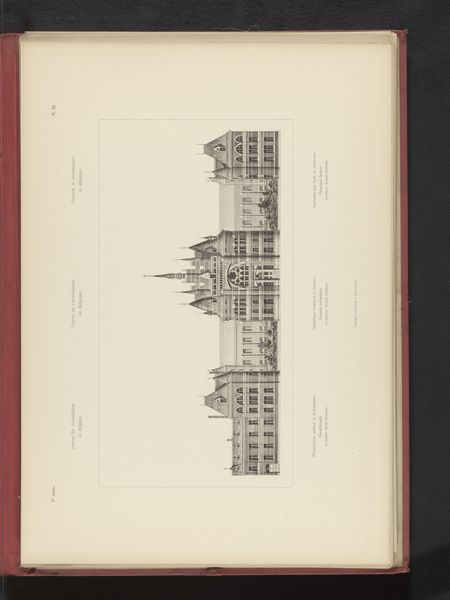
Gezicht op de wachtruimte van het stationsgebouw van Doornik, België before 1893
0:00
0:00
print, photography, architecture
# print
#
photography
#
cityscape
#
architecture
#
realism
Dimensions: height 248 mm, width 404 mm
Copyright: Rijks Museum: Open Domain
Curator: Before us, we have an intriguing piece, "Gezicht op de wachtruimte van het stationsgebouw van Doornik, België," a photograph from before 1893, held at the Rijksmuseum, attributed to the collaborative Römmler & Jonas. Editor: My initial impression is one of a somber monumentality. The sharp architectural details contrast strangely with what appears to be a bleak emptiness, all rendered in monochrome. Curator: It’s fascinating to consider the social context here. The industrial revolution was transforming landscapes and the advent of railways created hubs of movement, reshaping labor practices, commute and, indirectly, class divisions within society. Editor: Precisely. And the stark, geometric forms evoke a powerful sense of early modern architecture, where form and function start becoming the leading principle; stripped down aesthetic even. There's a semiotic coldness embedded in that aesthetic. Curator: Indeed, the materiality of the image is equally compelling, you have photography at the moment when photographic reproductions are widely distributed, influencing not only perception of space but production and distribution of images in itself. It challenges traditional artistic hierarchies, as a photograph of architecture enters the museum sphere. Editor: I see how it embodies certain principles of Realism. The clear depiction aspires to show the truth of its time—even in this somewhat romanticized portrayal of technological progress. There is undeniable aesthetic to that visual. Curator: Definitely. What fascinates me the most is how architecture affects society—train stations as these intersection points for the flow of labor, goods and even leisure transformed human interaction, and, through photography, its effect permeated societal consciousness at scale. Editor: Considering its technical composition, I would say the piece employs light and shadow to great effect; this heightens its gravitas; that particular perspective, which creates emphasis on specific volumes, reveals very clever arrangement skills. Curator: By observing, through a contemporary lens, its production, we are enabled to better grasp the industrial revolution effects on visual imagery and question its role as conveyors of an specific societal understanding. Editor: Exploring its formal qualities lets us access an understanding, almost, of a historical period that’s been captured within rigid structure, as light plays upon the surface of an architectural structure in monochromatic shades of gray. Curator: I’ve learned a lot—it made me think about how transit spaces play into modern power structures. Editor: Indeed; it's given me a newfound appreciation for the photographer's keen understanding of structural rhythm and emotional power inherent within formal arrangement.
Comments
No comments
Be the first to comment and join the conversation on the ultimate creative platform.

